The Secret of an Ancient Mesoamerican City-Teotihuacan
Teotihuacan Mexico city
The holy city of Teotihuacan is situated around 40 km northeast of Mexico City. The monuments is built between the 1st and 7th centuries A.D., characterized by the vast size of their Temple of Quetzalcoatl and the Pyramids of the Sun and the Moon, laid out on geometric and symbolic principles. The city is thought to have been established around 100 BCE, with major monuments continuously under construction until about 250 CE. The city may have lasted until sometime between the 7th and 8th centuries CE. Its major monuments were sacked and systematically burned around 550 CE. The collapse of this civilization might be related to the extreme weather events of 535–536. As one of the most powerful cultural centers in Mesoamerica, Teotihuacan extended its cultural and artistic influence throughout the region.
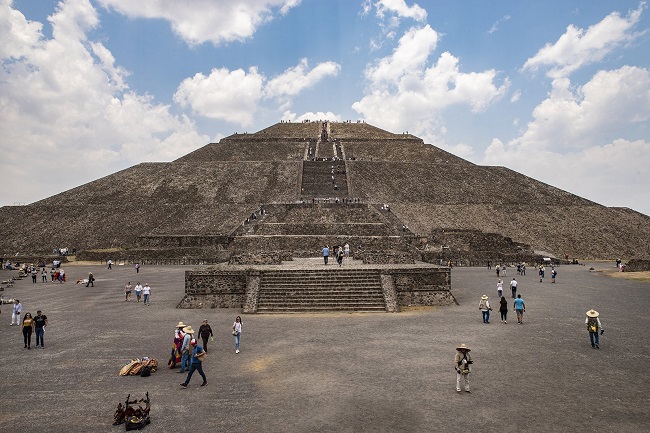
Teotihuacan and its valley consist of unique testimony to the pre-urban structures of ancient Mexico. Human occupation of the valley of Teotihuacan began before the Christian era, but it was only between the 1st and the 7th century A.D. that the settlement developed, with at least 25,000 inhabitants. The city and the archeological site are located in what is now the San Juan Teotihuacan municipality was designated a UNESCO World Heritage Site in 1987. It is one of the most-visited archeological sites in Mexico. The early history of Teotihuacan is quite mysterious, and the origin of its founders is uncertain. Around 300 BCE, people of the central and southeastern areas of Mesoamerica began to gather into larger settlements. Teotihuacan was the largest urban center of Mesoamerica before the Aztecs, almost 1000 years prior to their epoch. The city was already in ruins by the time of the Aztecs.
Teotihuacan History
Teotihuacan is an ancient Mesoamerican city located in the Valley of Mexico, 40 kilometers northeast of modern-day Mexico City. Teotihuacan is known today as the site of many of the most architecturally significant Mesoamerican pyramids built in the pre-Columbian Americas, namely the Pyramid of the Sun and the Pyramid of the Moon. At its zenith, from 1 CE to 500 CE, Teotihuacan was the largest city in the Americas, with a population estimated at nearly 125,000, making it at least the sixth-largest city in the world during its time.
The city covered 21 km2, area and 80 to 90 percent of the total population of the valley resided in Teotihuacan. Apart from the pyramids, Teotihuacan is also famous for its complex, multi-family residential compounds, the Avenue of the Dead, and vibrant, well-preserved murals. Additionally, Teotihuacan exported fine obsidian tools found throughout Mesoamerica.
Located 48 km northeast of Mexico City, Teotihuacan is one the archaeological sites with the longest history of exploration in Mexico. The first surveys date from 1864, and the first excavations from 1884. Certain monuments were restored from 1905 to 1910, such as the Pyramid of the Sun.
Also read- An Oval-shaped Unknown Phenomenon-Mima Mounds Washington
Well planned city
The city’s urban plan integrated near natural elements, such as the San Juan River, whose course was altered to cross the Avenue of the Dead. This north-south oriented main reference axis of the city is lined with monumental buildings and complexes, from which the Pyramids of the Sun and the Moon, as well as the Great Compound with the Temple of Quetzalcoatl (Temple of the Plumed Serpent) stand out. One characteristic of the city’s civil and religious architecture is the “talud-tablero”, which became a distinctive feature of this culture. Some buildings in Teotihuacan valley were decorated with wall paintings where elements of worldview and the environment of that time materialized.
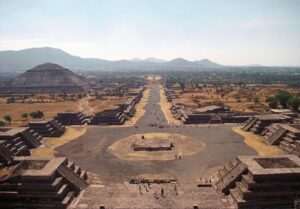
Excavations in the valley have revealed palaces and residential quarters that are of great interest. For example, La Ventilla, Tetitla, Zacuala, and Yayahuala are to the west, and Xala and Tepantitla are to the east. The city was razed by fire and subsequently abandoned during the 7th century. At the peak of its development, the city stretched out over 36 km2.
The architectural value
The Monuments of Teotihuacan represent the unique artistic value -The Pyramid of the Sun, built on a 350 m² terrace, measures 225 x 222 meters at the base, and is 75 meters high, with a strictness of layout based on cosmic harmony. The largest pyramid, the Pyramid of the Sun, was completed by 100 CE. and the earliest buildings at Teotihuacan date to about 200 BCE.
Following the destruction and abandonment of the city towards 650 A.D., the ruins were imbued with legend. The Aztec name of Teotihuacán means “the place where gods were created”. It is said that the sacrifices practiced by Moctezuma every twenty days on the site, made Teotihuacan a sacred place of exceptional value. Lining the immense Avenue of the Dead, the unique group of sacred monuments and places of worship in Teotihuacan constitutes an outstanding example of a pre-Columbian ceremonial center.
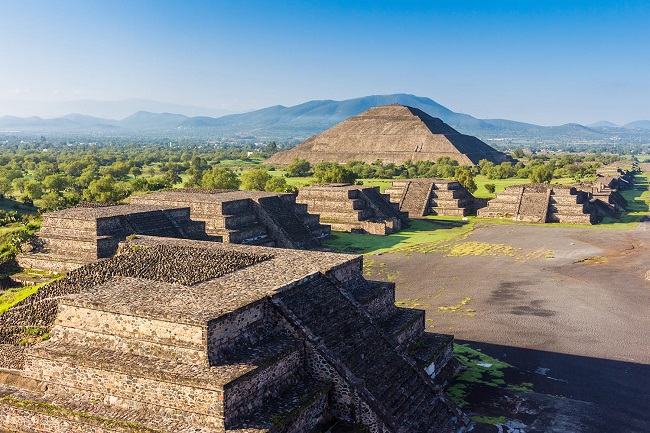
The Pre-Hispanic City of Teotihuacan fully preserves its monumentality, urban design, and artistic wealth. However, natural factors like rain, wind, and solar radiation constantly affect the site and its elements and are considered to be the most important threat.
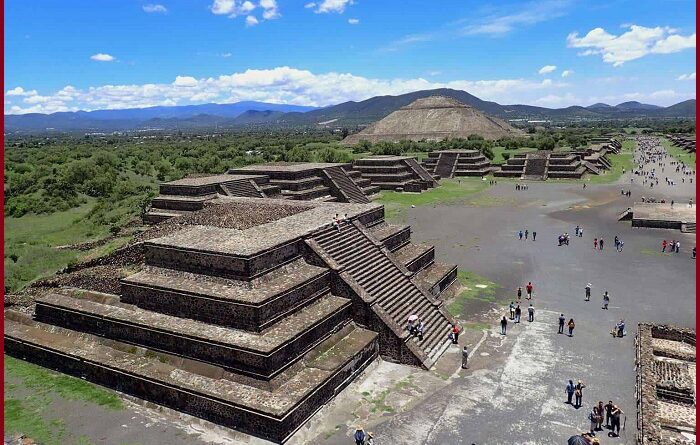
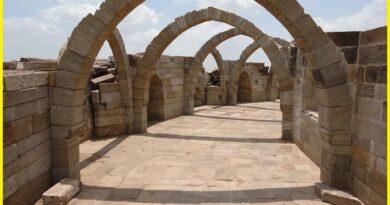
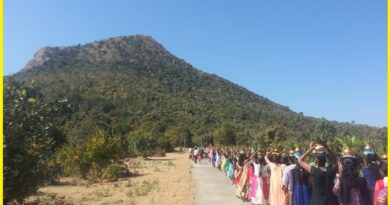
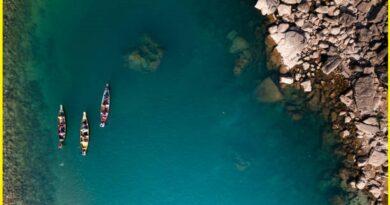
Pingback: Tikal Guatemala-The Most mysterious Mayan site in deep forest - Geotourism